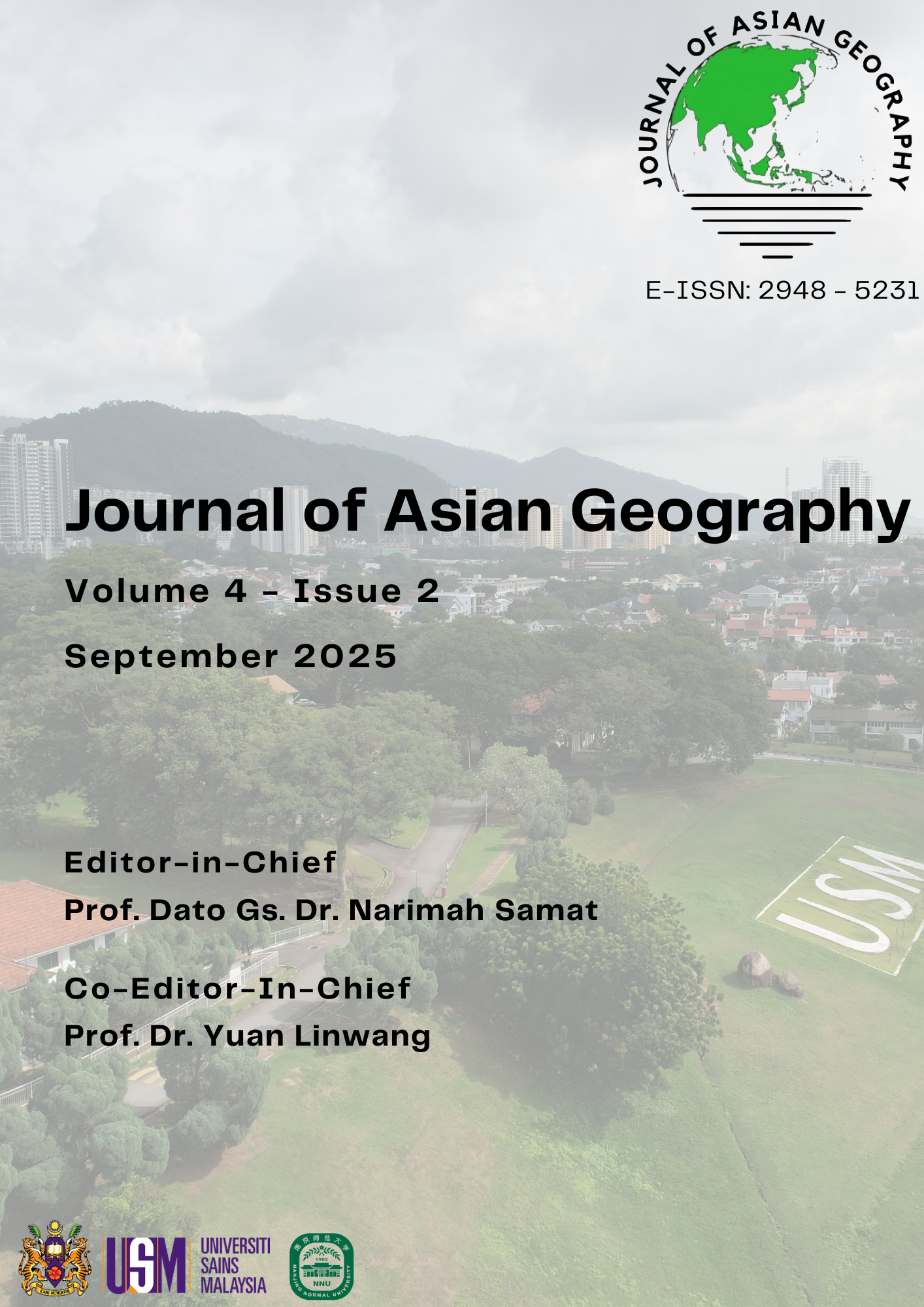GIS-Based Landslide Hazard Zonation for Disaster Resilience: Case Study of Samosir Regency, North Sumatra
DOI:
https://doi.org/10.36777/jag2025.4.2.5Keywords:
GIS, Landslide, Susceptibility Map, Samosir IslandAbstract
Samosir Island, located in the center of the Toba Caldera, is characterized by steep slopes and high rainfall, making it highly vulnerable to landslides. This study employs a Geographic Information System (GIS)-based spatial approach to develop a comprehensive landslide susceptibility map of the island. Four conditioning factors—slope gradient, rainfall, land cover, and soil type were classified and weighted according to their influence on slope stability, then integrated through a weighted overlay method. The distinctive contribution of this research lies in its island-specific, multi-parameter GIS analysis for Samosir, a region of global geological significance but with limited prior landslide risk assessment. By providing a scientific basis for hazard evaluation, the study supports not only local disaster risk reduction and land-use planning but also advances broader methodological practices for volcanic and high-rainfall terrains. The results categorize susceptibility into three classes: low, medium, and high. Low-susceptibility areas correspond to flat terrain, dense vegetation, and stable soils; medium-susceptibility zones are found in transitional lowland–hill areas; while high-susceptibility zones are concentrated on steep slopes with sparse or built-up land cover, loose soils, and intense rainfall
Downloads
Published
Issue
Section
License
Copyright (c) 2025 Journal of Asian Geography

This work is licensed under a Creative Commons Attribution 4.0 International License.


